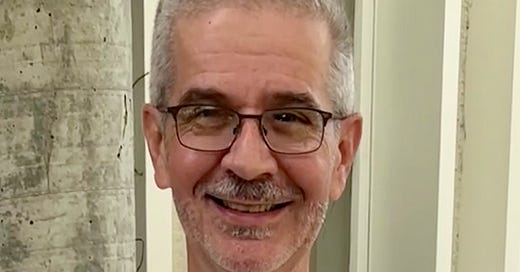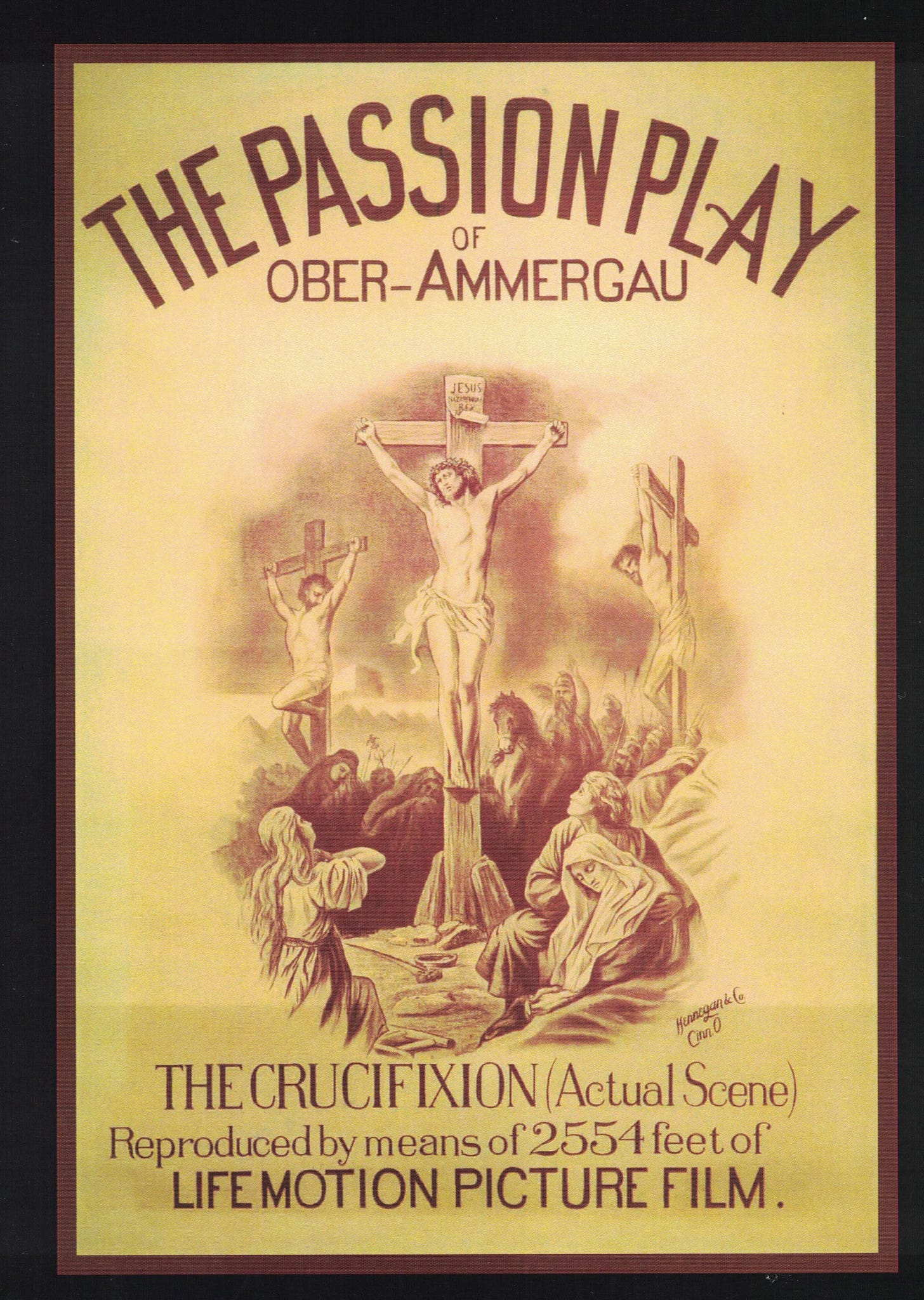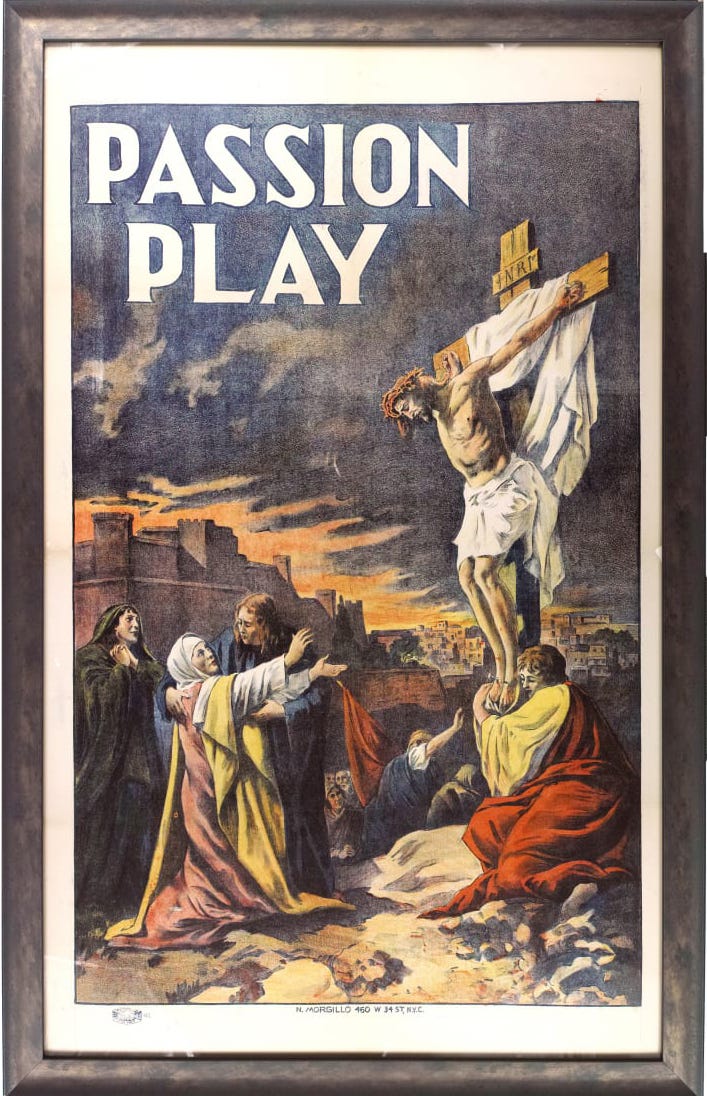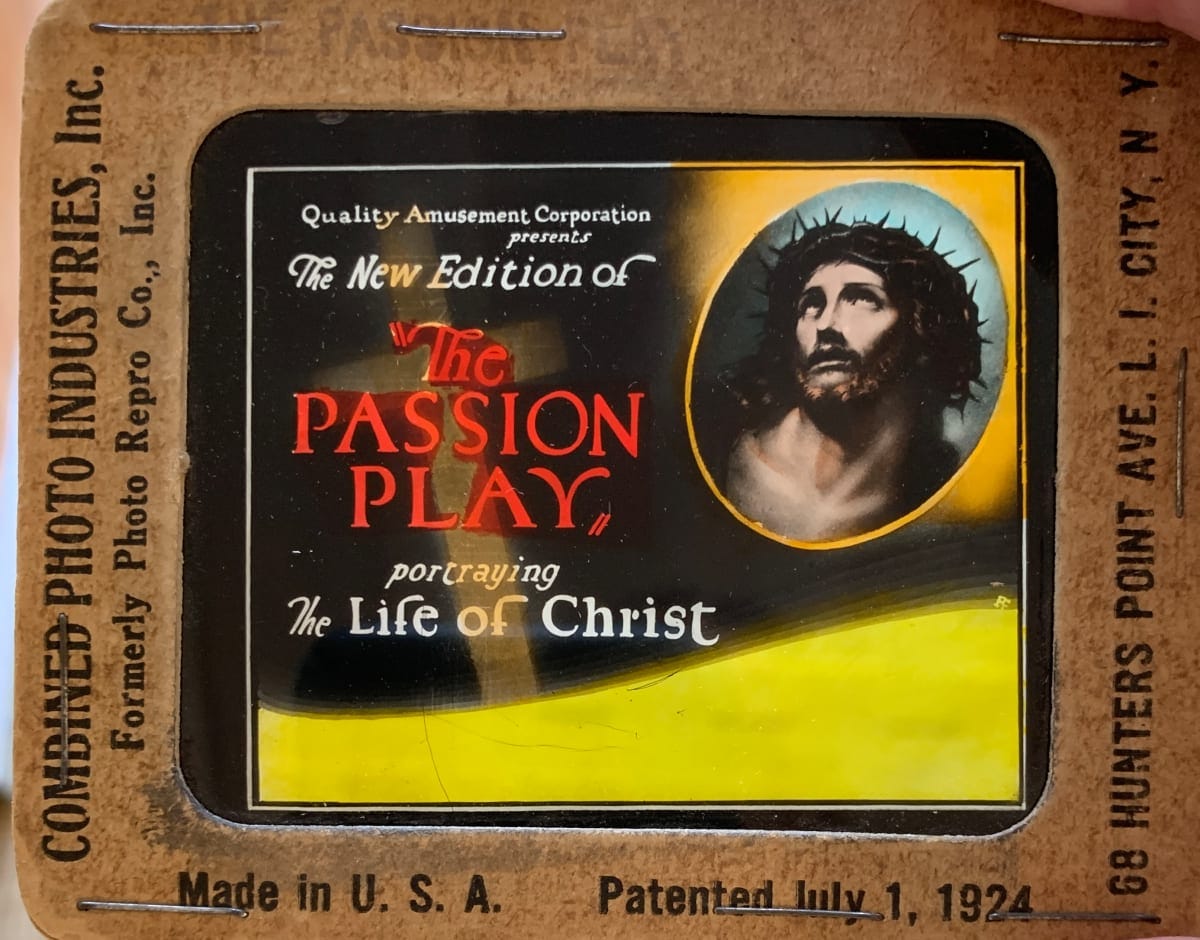Religion and Cinema at Blackfriars Gallery
In this interview with Fr. Renz, Director of the Blackfriars Gallery, about their movie poster collection, I learned how Dominicans engage the culture like St. Thomas Aquinas, in a search for truth.
Several months ago, Fr. Christopher Renz, OP, Director of the Blackfriars Gallery at the Dominican School of Philosophy and Theology (DSPT) in Berkeley, read my review of Deborah Lanino’s exhibit at his gallery, which I posted here:
I also wrote about Fr. Renz’s response to the above review, here:
Fr. Renz then invited me to review the Blackfriars Gallery’s latest exhibit, Spirit of Cinema. I don’t drive much anymore, but I was happy to be able to get a ride with my friend Stewart Shipley, so we were able to meet up with Fr. Renz at the gallery for an interview in March.
In April, I introduced the Spirit of Cinema exhibit in the following linked Substack post, which I published on Easter Monday. This post includes images of the posters for various versions of the movie The Ten Commandments that are in the Blackfriars Gallery’s collection:
As it happened, other writing deadlines, along with a series of seriously unfortunate events, including the death of my youngest sister, a computer disaster with loss of fifteen years of data on both my iMac and backup device, a case of COVID, and other difficulties (I won’t bore you with any more details of the common ills and misfortunes everyone born is heir to), I was not able to finish my review of the Spirit of Cinema exhibit until today. Admittedly, this does not give you much time to get to see it for yourself. But I do recommend you try to experience the exhibit, if at all possible, which is still on display with two different themes in two locations, during a few more weekdays. The closing dates are in the bulleted list below.
The Spirit of Cinema exhibit is a collaboration between DSPT and Santa Clara University's Jesuit School of Theology (JST-SCU). The exhibit is split between two galleries in the Berkeley hills, both of which are open Monday to Friday: 9:00 a.m. to 4:00 p.m. Note that the Blackfriars Gallery exhibit is open until the end of the month, but the Manresa Gallery exhibit closes this Friday, May 23.
At Blackfriars Gallery, 2301 Vine Street, Berkeley, CA 94708, Illuminating the journey of faith.
At Manresa Gallery (JST), 1735 Le Roy Avenue, Berkeley, CA 94709, Miracle and Wonder in Biblical Epics
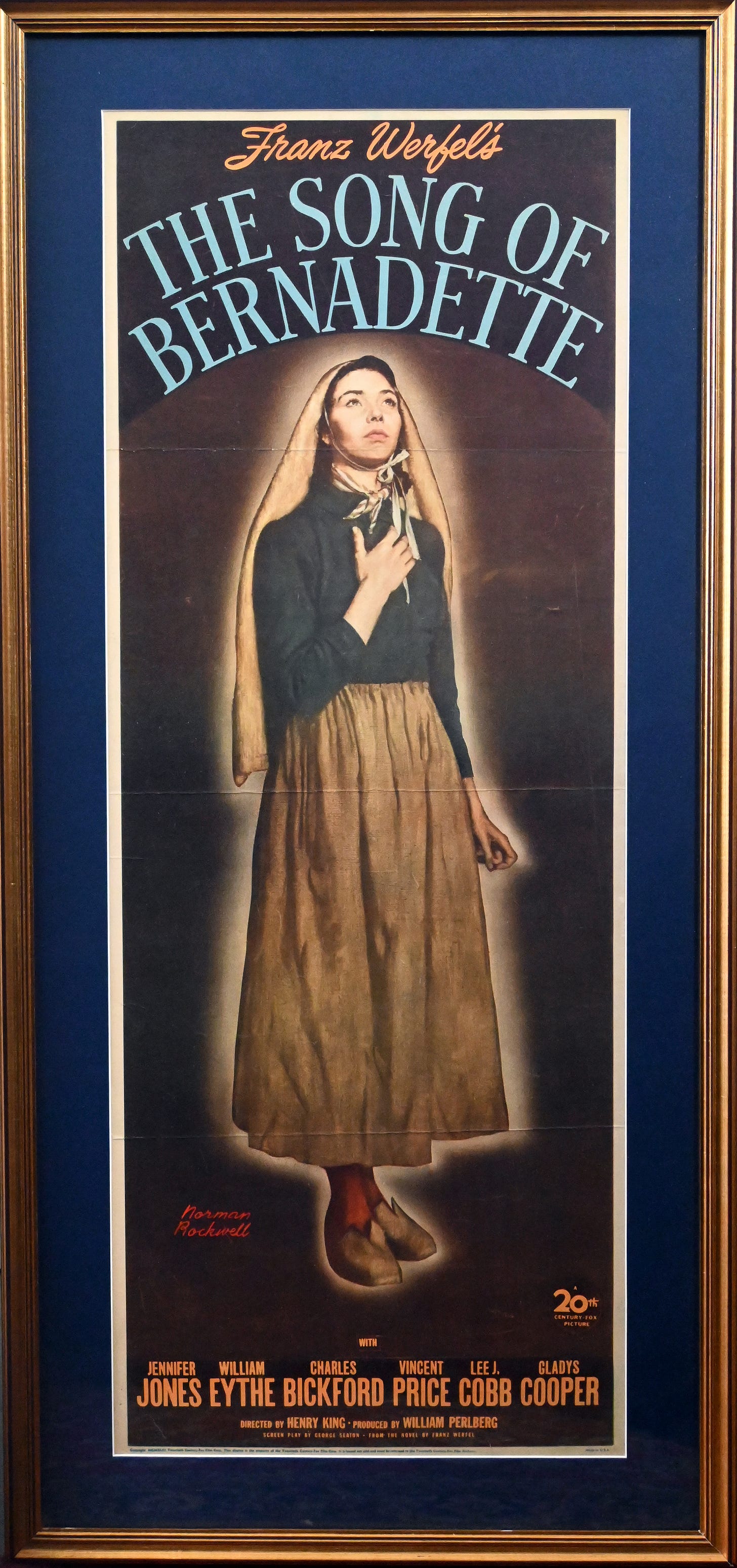
SCROLL DOWN FOR MORE
Interview with Fr. Christopher Renz, Director of Blackfriars Gallery
In the interview with Fr. Renz that is included below, I learned a lot about the gallery’s collection of movie posters and other rare memorabilia from movies about Biblical themes, starting from the earliest beginnings of cinema, which are interesting as works of popular art and particularly interesting for anyone interested in the history of movies. I also learned about the Dominican philosophy of engaging with the culture—in the spirit of the order’s most famous philosopher, St. Thomas Aquinas.
Their collection is extensive. As Fr. Renz told me: “We have over 85 first editions, so these are not reproductions.” In addition to the 85 professionally framed first-edition posters, the gallery has more than 100 unframed posters and first-edition lobby cards, movie stills, and other ephemera in its collection.
“They’re first edition posters. In fact, we have the oldest one in existence, which was printed for the filming of The Passion Play, from 1898.”
In case you have never heard about the famous Oberammergau Passion Play, a series of tableaus from the Old and New Testaments, with an emphasis on Christ’s Passion has been staged every tenth year since 1634 in the village of Oberammergau, in Bavaria, with some lapses and changes to the sequence. Each time it is staged 400,000 to 500,000 people come to view it from all over the world.
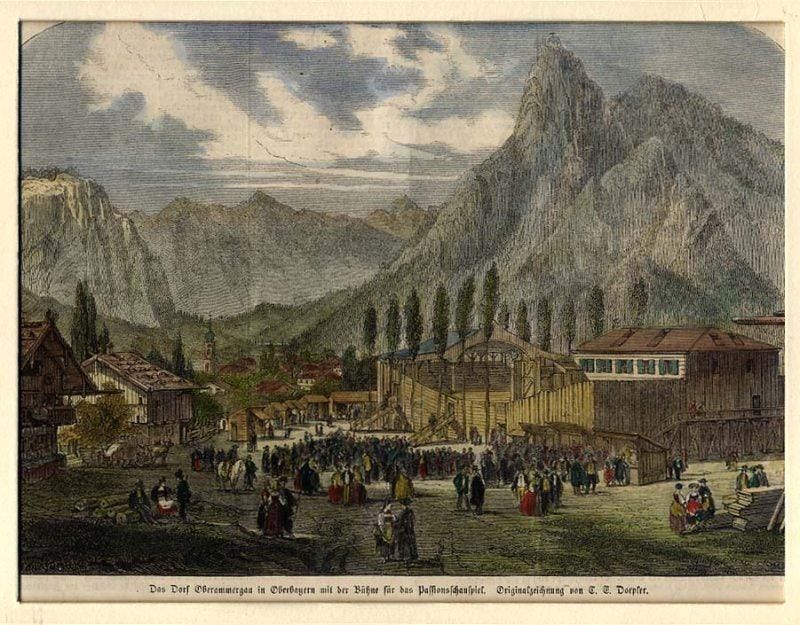
Interestingly enough, when doing research for this topic, I found this article, “The Passion Play of Oberammergau (1898 film at the center of a historic lawsuit).” In it, I discovered that although the poster advertises that the cinemascope film was of the Oberammergau Passion Play, it was actually filmed on sets in New York City on the roof of the Grand Central Palace. It premiered January 30, 1898, at the Eden Musee, an entertainment complex near the location of the current Madison Square Garden.
Many Passion Play movies were filmed in the earliest years of motion pictures. I found this quote at Wikipedia: "At least ten different Passion Play films were released between 1897 and 1914, including three by Pathé in 1902, 1907, and 1914." The early ones were reverent.
The ornate “movie palaces” built in the 1920s and 1930s did not exist at the time, so the reverently produced Passion Play films were often shown in churches. However, during the next decades, moviemakers began to mix very worldly themes into their Bible epics.
I asked Fr. Renz about the apparent conflict between the goals of movie makers and Catholic Christians.
Roseanne T. Sullivan: I was brought to see The Ten Commandments when I was 11 by the sisters who taught at my grammar school. I just sort of accepted what I saw, but I marvel now because there are so many sexual situations in that movie and in other Biblical epics of the time, all of which are teeming with brawny, bare-chested men, and lovely women gyrating around wearing hardly any clothes. You know, typical Hollywood.
Movie makers do what they do for the money, right? They're not doing it because they're holy people trying to lead moviegoers to faith. So I wonder about your interest. Is your approach that we can get holiness out of movies based on Biblical themes, even ones that were titillating, and all of which were created for financial gain?
Father Renz: I think you know one of the things that drives us as Catholic Christians is the Incarnation. God becomes part of humanity, and through His Passion, Jesus helps to revivify humanity, so there's a holiness in life. We Dominicans are always looking around for where the holiness is. And that's why historically we've often seated ourselves next to universities. For example, our seminary started in Benicia.
When the master of the order came to visit in the 1930s, he said, “You have to move from Benicia. You need to get close to UC Berkeley.” Historically, that's what we do, and the rationale is that the universities are centers of learning. So we go to where the young intellectuals are going to be raised up.
If we're to be able to preach the Gospel in a relevant manner, we need to know what's going on in the culture. And there are many ways to do that.
Many of the seminarians and I, along with few of us older friars, all have science backgrounds. Lots of engineers. My doctorate is not in theology or philosophy. It's in virology, the study of viruses.
We're constantly trying to educate ourselves about what's going on in contemporary culture. And of course, cinema or any art, really, is a place where the culture, the contemporary culture, is expressing itself.
So you learn from going to the movies. You might not like or even resonate at all with the movie per se and the content of the movie, but as a Dominican, you're asking yourself, what's going on here? Learning from that, then you can formulate ideas and topics that need to be addressed through your preaching, whether that preaching is liturgical in the case of a Mass, or whether it's preaching through your own research and writing, or teaching—or whatever it is we happen to be doing.
We want to know what the culture has to say, so we can see what the good is and also speak against the bad.
In our educational approach here, we don't cover every topic, but we try to engage the more intellectually challenging topics, such as, for example, artificial intelligence. What's that all about? And nobody knows yet. All the issues about sexual identity . . . We’re trying to say, Well, topics like these don't align with our Catholic belief system, but we're not afraid to study them because we're grounded in our tradition, and we can move from a place of confidence rather than a place of “I don't want to get involved and I can't talk to you about these things.”
STAY TUNED FOR PART TWO
